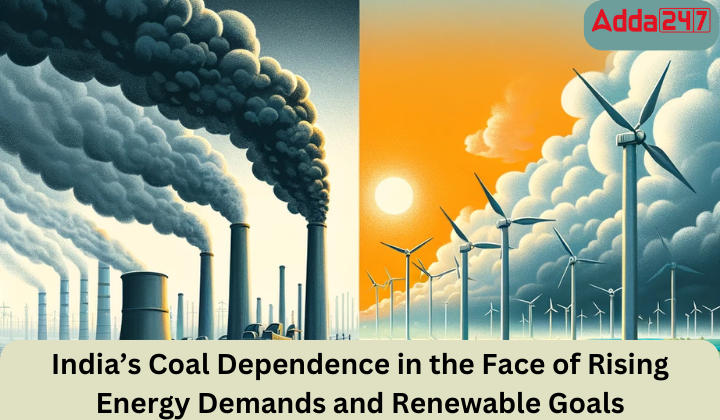Table of Contents
As the world grapples with climate change, India’s increasing reliance on coal poses a significant challenge. The nation’s growing energy demands, coupled with ambitious renewable energy targets, present a complex scenario. Despite commitments to achieving net-zero emissions and increasing renewable energy capacity, India continues to expand its coal production. This article explores the reasons behind this apparent contradiction and what it means for India’s energy future.
A Surge in India’s Energy Demand
Economic Growth and Energy Consumption
India, one of the world’s fastest-growing economies, is witnessing a substantial increase in energy consumption. In 2022, the nation’s power demand grew by approximately 8%, nearly double the pace of the Asia-Pacific region.
Increased industrial and commercial activity is the main factor driving this surge. The residential sector accounts for a quarter of India’s power usage, with agriculture also being a significant consumer.
Future Projections and Challenges
The International Energy Agency (IEA) forecasts that India will experience the largest growth in energy demand globally over the next 30 years.
A striking example is the expected nine-fold increase in electricity use for air conditioning by 2050, surpassing the current total power consumption of Africa. Meeting these demands presents a formidable challenge.
Coal: India’s Current Energy Backbone
Increasing coal production
In response to these challenges, India has intensified its coal production. From 2021–22 to 2022–23, coal production rose by 14%, reaching 893 million tons. The government has set even higher targets for the coming years, aiming for 1.5 billion tons by 2030.
Reasons for Coal Dependence
- Insufficient Renewable Capacity: Currently, only 22% of India’s total energy is generated from renewable sources, with fossil fuels, predominantly coal, supplying 75%. Despite efforts to increase renewable energy, it falls short of meeting current demands.
- Renewables’ Reliability Issues: Renewable energy sources like solar and wind are inconsistent, depending on factors such as sunlight and wind availability. India’s need for over 60 GW of battery storage to fully utilize its renewable potential is hindered by the high costs and supply chain challenges associated with grid-scale battery storage.
- Hydropower Complexities: Hydropower, another renewable option, faces ecological, infrastructural, and geopolitical challenges, particularly in the Himalayan region, where many projects are planned or underway.
Renewable Energy Landscape
Ambitious Goals and Current Realities
India aims to achieve 500 GW of renewable energy capacity by 2030, a significant increase from the current 180 GW. However, the constraints of rapidly scaling up renewable energy infrastructure mean coal will remain a primary energy source.
Phase-Down Approach
Union Minister R. K. Singh has highlighted that India plans to phase down, rather than phase out, coal use. By 2030, fossil fuels are expected to account for about 35% of electricity generation, down from the current 60%. However, in absolute terms, coal capacity is likely to increase to meet the rising electricity demand.
Challenges and Opportunities in Transition
Balancing growth and sustainability
India’s energy policy faces the dual challenge of supporting economic growth and ensuring environmental sustainability. The transition to renewable energy must be balanced with the immediate need to meet burgeoning energy demands.
Investment and Innovation in Renewables
Accelerating investment in renewable energy technologies and infrastructure is crucial. Innovations in energy storage, grid management, and efficient renewable generation can pave the way for a more sustainable energy mix.
International Collaboration and Support
India’s energy transition will benefit from international collaboration and support, especially in technology transfer and financial assistance. Global partnerships are essential in addressing the challenges of climate change and sustainable development.
Conclusion
India’s continued reliance on coal, amidst growing energy demand and ambitious renewable goals, reflects a complex energy landscape. While coal remains a necessary part of India’s energy mix in the short term, the long-term focus is on expanding renewable energy capacities. Balancing immediate needs with future sustainability goals requires significant investment, innovation, and international cooperation. As India progresses, its journey offers valuable insights into managing energy transitions in rapidly developing economies.



 TSPSC Group 1 Question Paper 2024, Downl...
TSPSC Group 1 Question Paper 2024, Downl...
 TSPSC Group 1 Answer key 2024 Out, Downl...
TSPSC Group 1 Answer key 2024 Out, Downl...
 UPSC Prelims 2024 Question Paper, Downlo...
UPSC Prelims 2024 Question Paper, Downlo...




